What makes a great team? Bill Gates once defined it as one where the group acts with the same unity of purpose and focus as a well-motivated individual.
How do you go about building this? It’s not as simple as throwing in a bunch of collaboration tools and expecting your team to achieve their common goals.
This is especially true in a remote setting. When you work across time zones, it’s a challenge to communicate your sense of purpose to a colleague who’s logging in from halfway around the globe.
There are a bunch of things you need to have in order to collaborate effectively.
- A unified platform where all communication happens
- Clear documentation of each business process
- A team that can communicate proficiently in one common language
- An onboarding process to train your team to use the communication tools
- Robust infrastructure
You can think of this as a five-legged stool. Even if you fail with one of these parameters, your collaboration suffers and your team might start performing poorly.
Let’s say you have different teams communicating through different channels, some via email, others through the team chat. Now, every time you bring together a bunch of colleagues to work on a common project, then they tend to create a new communication channel.
Over time, you may end up with hundreds of different communication streams. This is a challenge if you want to check on particular conversations leading to a particular decision being taken.
Teams change all the time, and a defragmented communication strategy makes it difficult to pass on your focus and vision to newer people joining the team.
Other parameters like poor infrastructure and a lack of a common language can have a lot more direct impact on everyday conversations. This slows down decision-making and could also potentially contribute to higher work-stress and poor morale.
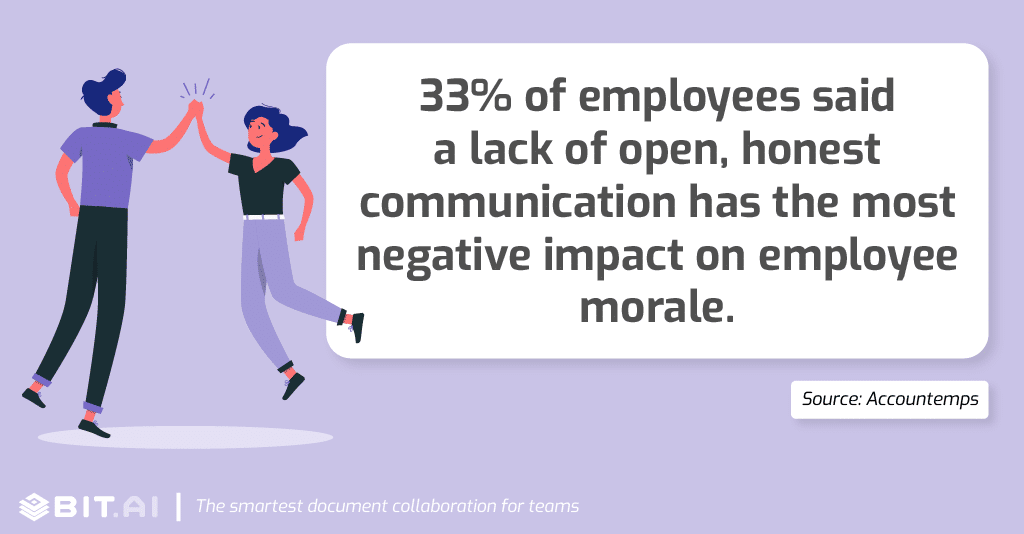
If you are a bootstrapped organization, there are a few things you can do in order to make it easier for your team to collaborate effectively. Here are a few points towards achieving this.
Start with the hiring process
As an employer, have you ever had “hiring remorse”? Yes, that’s a thing. According to a CareerBuilder survey, nearly 74% of employers have regretted hiring the wrong worker for a job.
It’s not so much about their lack of qualifications to do their job. Instead, it often boils down to how they work in the specific work setting.
Does their approach to work not align with how the rest of the team approaches it? Do they fail to communicate the way your team wants them to? There are plenty of reasons why you may regret hiring the wrong worker.
In the words of Warren Buffett, there are three things you should look for in a new hire – integrity, intelligence,and energy. And if they don’t have the first, the other two will kill you.
Effective collaboration starts right in the hiring process. Find a worker who is a cultural fit and can also potentially meet the five parameters established at the beginning of this article.
Here are some things you must do.
- Have at least one round of interview over email or chat that tests their written communication
- If it’s a remote hire, learn more about where they will be logging from. Is this a small town where reliable internet is a problem?
- If it’s a programming role, ask to see their past projects – do they have adequate comments included in the code?
- Assess their approach towards work. Are they laid-back or aggressive? There is no correct answer here, but it should align with how the rest of your team approaches work.
Make a note of these assessments in your ATS so that they are a part of your hiring strategy. Individually, these are possibly minor issues with a new hire that is worth overlooking for a good candidate. However, while it is possible for you to train them to work in a way you are comfortable with, some things cannot be unlearned.
It is important to see how much these apparently minor flaws can impact the overall engagement with the team.
Prioritize & delegate
When you are starting up, your team size tends to be very small – typically between one to five people. At this stage of running a business, people tend to wear multiple hats and have a great sense of ownership towards the business.
As your business grows, your team size increases too. At some point, wearing multiple hats can work against your business.
To collaborate effectively, you need a single point of contact for every task or responsibility. There are two advantages to adopting this strategy.
Firstly, people who handle the role become exceptionally efficient at what they do. This brings down the turnaround time to execute tasks, and thus makes your organization more efficient overall.
Secondly, it is easier to train the employee in following a particular process to get the job done. For instance, if you have a data analyst whose job it is to keep all your vendor details updated, you could make them responsible for documenting each step of the process as well. This makes it easier to transition the role to a different person when the need arises.
A positive side-effect to doing this is that it now makes it easy for you to split all your business tasks into “core” and “non-core” tasks.
There are different ways to define what a core task is. Personally, I would call anything that you don’t absolutely need to run your business as non-core.
For example, do you absolutely need SEO to run a plumbing company? Not really. So, that’s a non-core business activity.
Once you have prioritized your core and non-core tasks, you can use documentation that you have built to delegate to a third party agency.
Delegating non-core activities can make your collaboration a lot more efficient. Here’s how.
First, by delegating your non-core tasks, you are no longer required to handle operations and the daily grind. This way, you only measure success by the results and this frees up your time to focus on the core tasks.
Second, there are different collaboration tools that work best for different tasks. I had already mentioned the pitfalls of using multiple communication platforms within an organization.
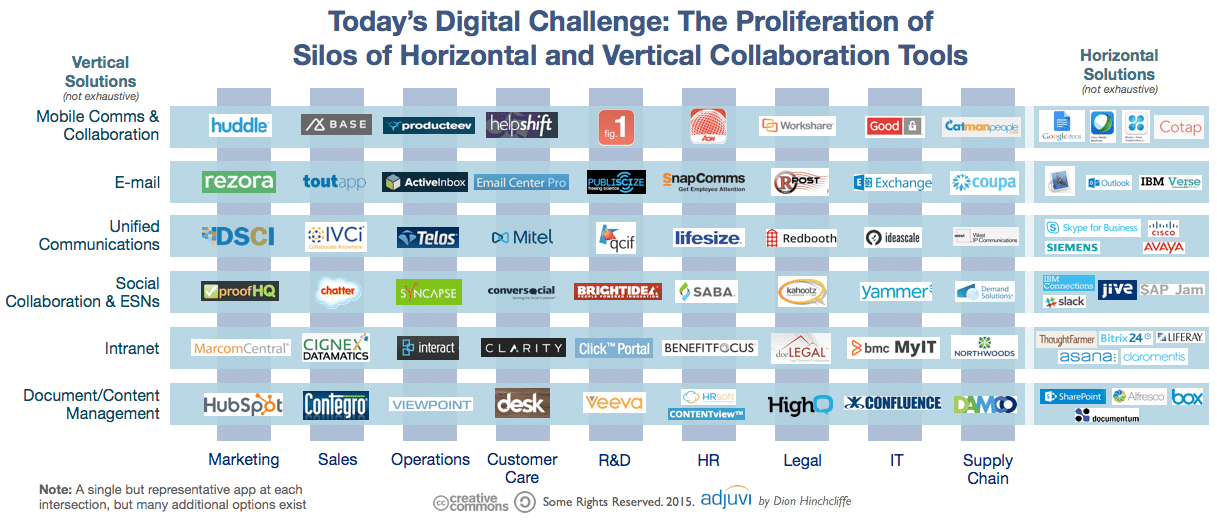
Letting an agency take over specific tasks allows them to invest in collaboration tools that work best for their job while you can continue using tools that work best for yours.
Synchronous vs. Asynchronous Communication Channels
Do you hop on a call with a team member every time there is something to discuss? You must probably reconsider this.
Synchronous communication channels that include traditional office meetings, phone calls, video conferences, etc. require all stakeholders to be present at the same time. This is great for a number of reasons:
- Scrum meetings set the agenda for teams a whole
- Remote working can seem lonely. Getting to talk to your colleagues on video is a great opportunity to build camaraderie
- The team lead or manager wants to offer weekly or monthly updates to her team regarding business or strategies
There are a few things you could potentially miss out on with synchronous communication.
- It requires all team members to be equally productive at the same time.
- There are multiple points made by different stakeholders that can potentially get lost in communication
- Documenting the conversation can also be a challenge in many synchronous communication channels.
Asynchronous communication, by its very definition, is a channel where communication is stored to be processed by other stakeholders at a later time. This includes emails and task management tools. These channels let stakeholders get to work at their convenience.
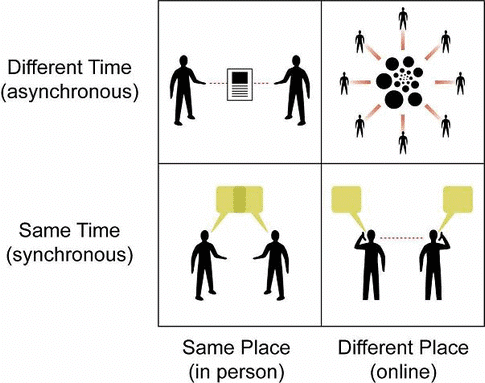
Source: iMedicalApps
As a general rule of thumb, pick synchronous channels to disseminate information or to discuss broad strategies and asynchronous channels when discussing the nitty gritties and operational stuff. This keeps communication efficient.
Invest in the right tools
Oftentimes, the success of your collaboration is a result of using the right tools. There are a ton of collaboration software applications out there. The one you choose for your business has to be based on the kind of projects you manage, the stakeholders involved, and the kind of communication you need to have, and ultimately the project management methodology that’s right for your business.
For example, a content writing agency may find it efficient to use Kanban-based tools. This is because they run dozens of projects that all follow the same process. It’s efficient to create new cards for each project and run them through different columns based on their status.
An app developer on the other hand may opt to go with a Scrum-based approach since they may have to go through a lot of iterations along the project lifecycle.
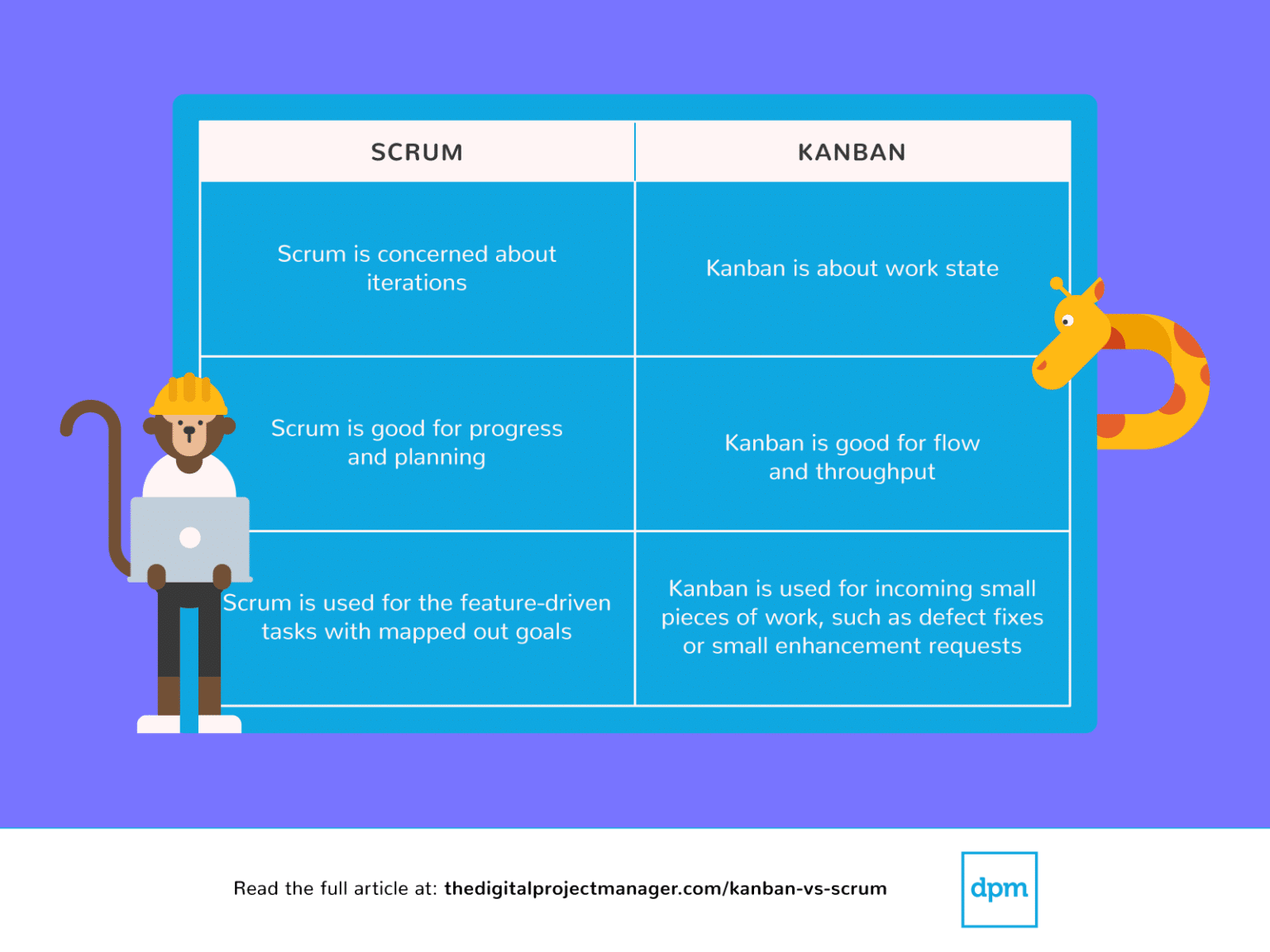
Once you have a clear understanding of your methodology and the communication channels, pick the tools that can make this approach more effective.
For instance, if you have a geographically distributed team to create mobile apps, you may prefer a communication channel like Glip over live chat for communication. With this in place, you could find an app that integrates with your channel for project management so that you could adhere to the project management methodologies while continuing to use a communication channel that you prefer.
Now, if the project is non-core by nature and you choose to outsource this, your project methodology might also affect the way it gets billed. An agile project often gets billed by the hour, and this would necessitate investing in time tracking tools.
In short, do not pick tools simply based on what you like and try to force-fit your project management through these tools. Instead, chalk out your plans and processes before finding the right tools to use for this purpose.
While this may not always work out to be the cheapest option, the productivity improvements through better collaboration can more than make up for this.
Document every step of the way
There are no ways around this. The effectiveness of your collaboration is directly impacted by how much documentation exists for each process.
Earlier in this article, we talked about how documentation makes it easier to transition a task to a new hire or to an external agency. But documentation has a more direct impact on effective collaboration.
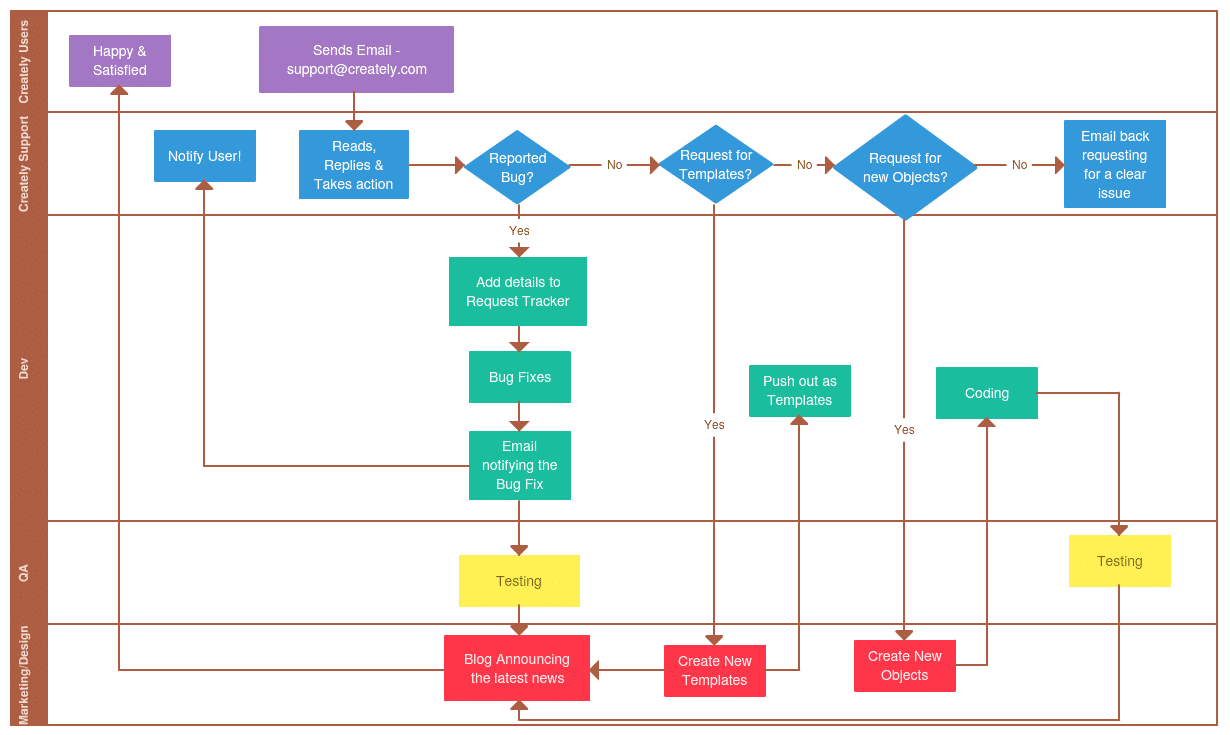
Source: Creately
When you start documenting your every step, you (or the team) might start noticing the finer aspects of the job that could bring productivity down. A small incremental improvement in process tends to have a compounding effect on the productivity of the entire team.
Let’s go back to the example of a development agency building mobile apps for customers. One thing a lot of business analysts in these industries come to realize is that clients do not pay attention to product documents as much as they focus on working prototypes.
What happens often during these development stages is that clients sign off on a product document only to come back with changes when the first prototype is complete.
This leads to a lot of back and forth ultimately contributing to ballooning costs and higher friction between the two teams.
When you start documenting these processes, you may notice this pattern, and this might help you with coming up with alternate strategies to improve the process.
For instance, you may pick the core product requirement and build an MVP around this early on – this gives the client an idea of what is to come. Future iterations could be based on the features to add and things to make the product better.
Documentation is thus the first step towards a ‘Continuous Improvement Process’, also more popularly known as Kaizen.
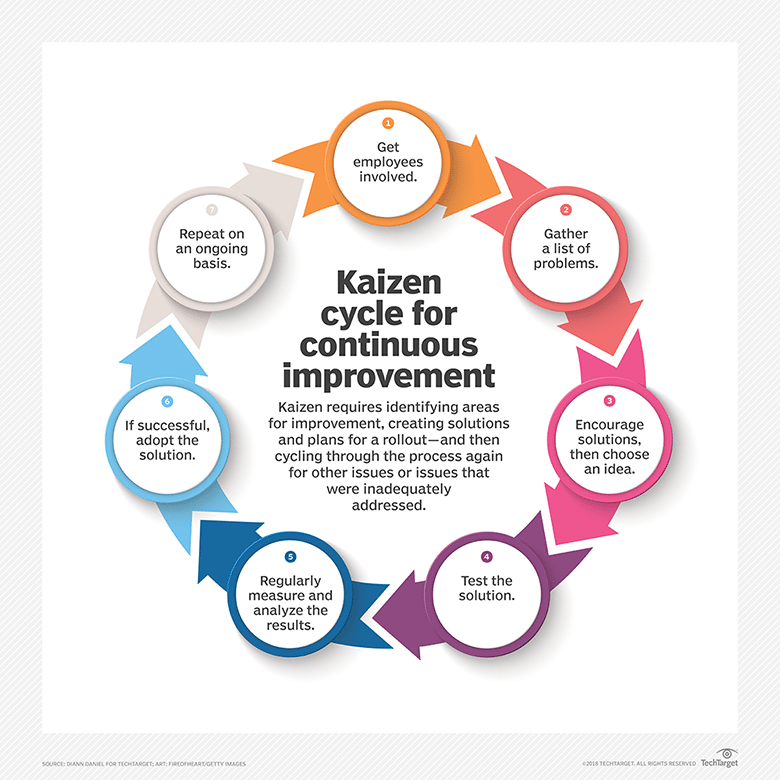
Overtime, your business would have established a highly refined collaborative structure that is highly productive and less bureaucratic to deal with.
Never take your foot off the pedal
Effective collaboration is an ongoing process. Your team needs to experiment with different strategies, and processes to identify a collaborative mechanism that works well for all of them. This, of course, means a lot of mistakes. But as long as you are collectively earnest about learning from these mistakes, the only way to go is up.
Originally published Mar 07, 2021, updated Jan 16, 2023
